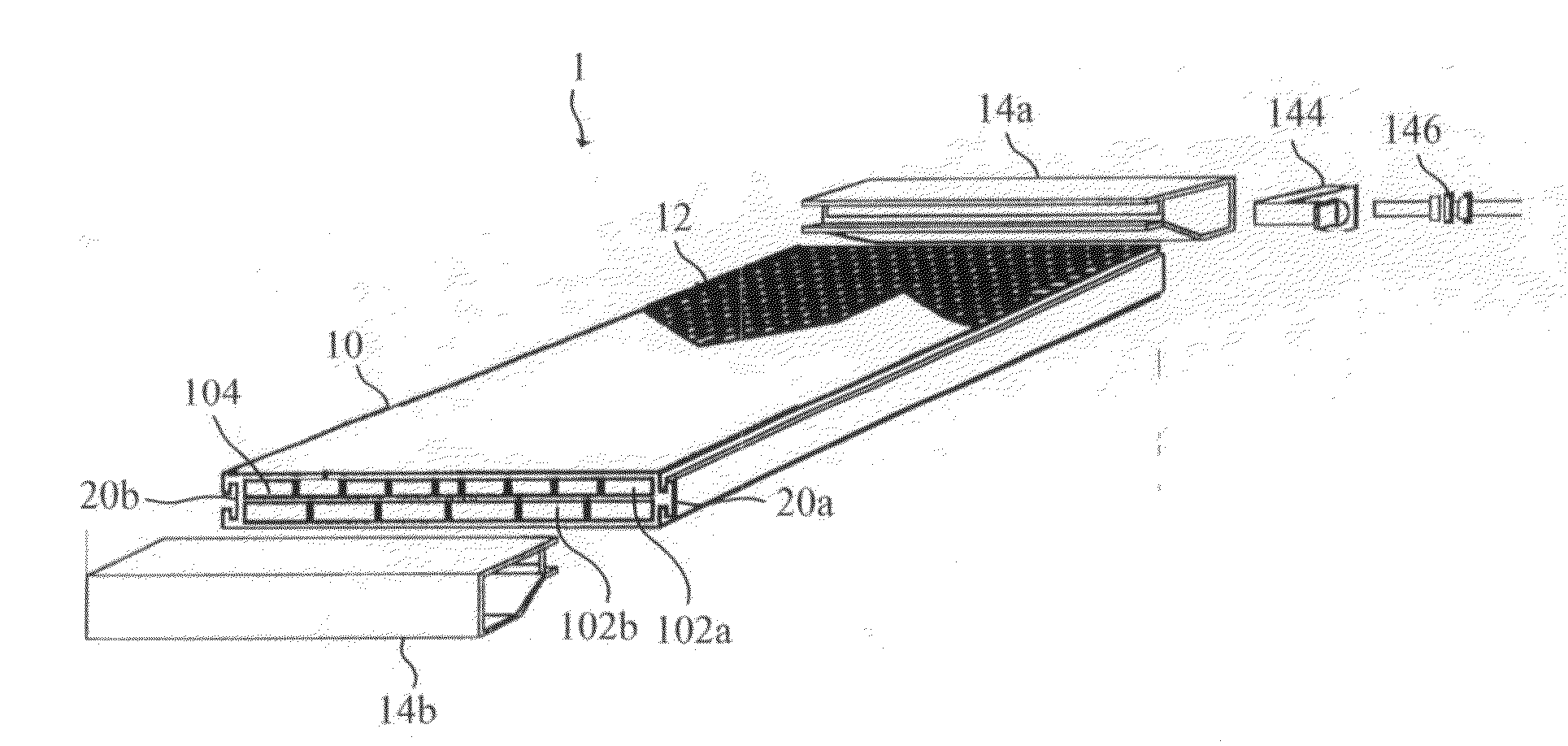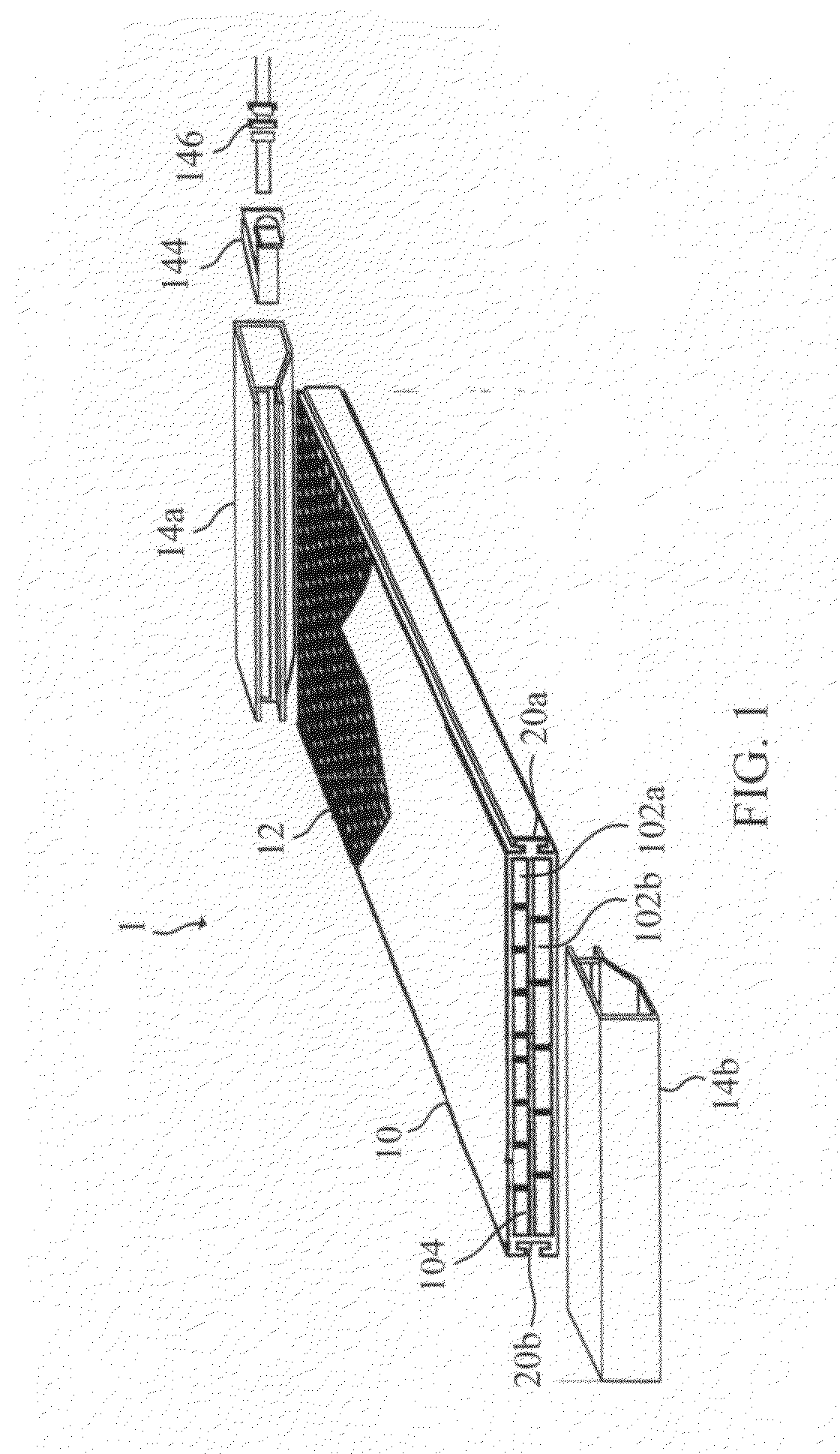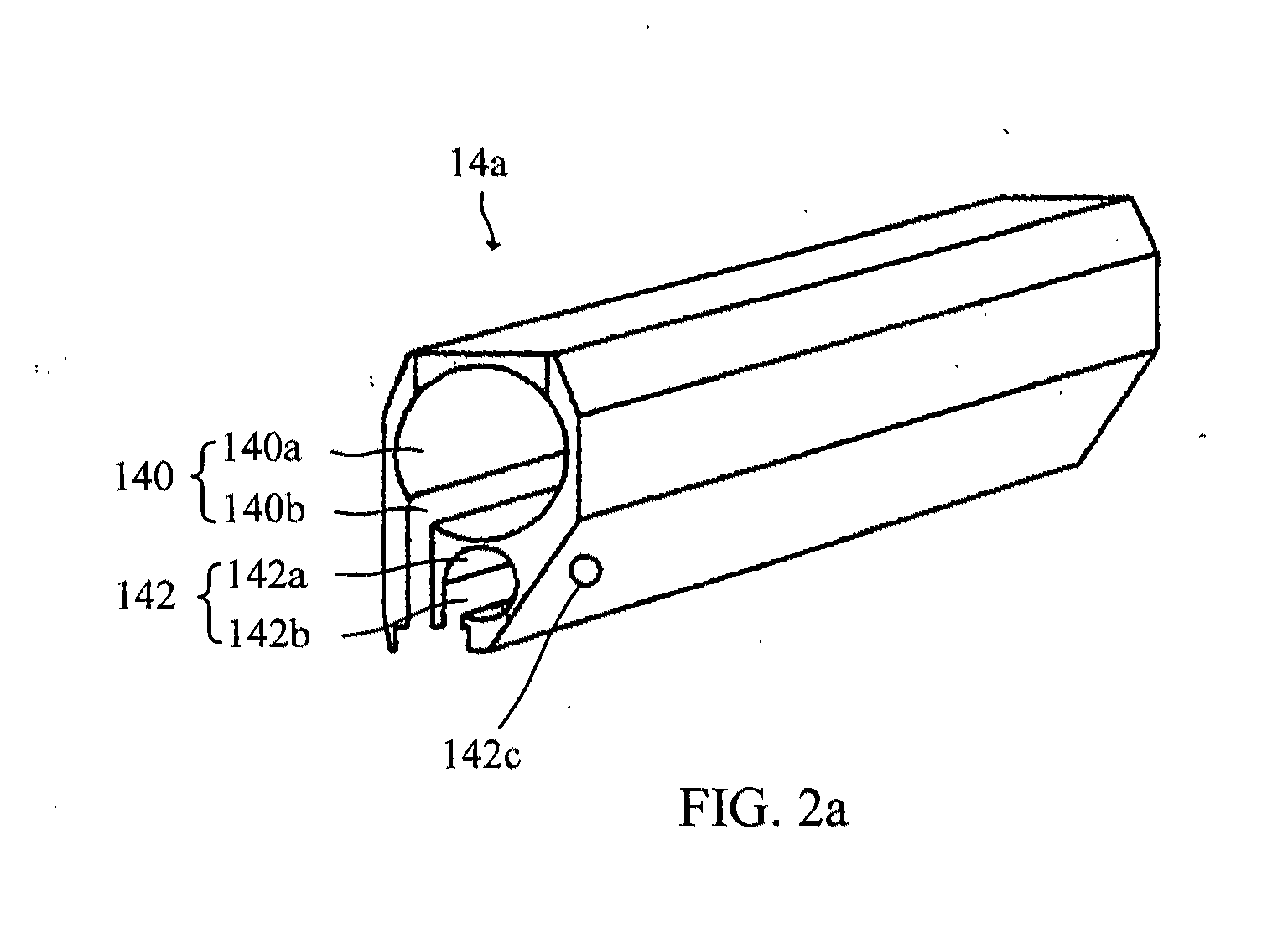Self-contained, multi-fluid energy conversion and management system for converting solar energy to electric and thermal energy
a management system and solar energy technology, applied in the direction of heat collector mounting/support, thermal-pv hybrid energy generation, lighting and heating apparatus, etc., can solve the problems of complicated tubes/pipes, failure to provide a fast and efficient way to assemble the entire system, and circulating water in the panel may freeze and burst pipes, etc., to achieve simple, reliable and inexpensive
- Summary
- Abstract
- Description
- Claims
- Application Information
AI Technical Summary
Benefits of technology
Problems solved by technology
Method used
Image
Examples
example 1
[0088]This example illustrates how a system can be constructed. FIG. 11 illustrates a construction of a system, according to some embodiments. System 1100 includes protective glass cover sheets 1105 on the top side of the system 1107 and the bottom side of the system 1109 to protect the photovoltaic cells 1110, which generate the electrical power from solar energy. Air channels 1115 are designed into the system to conduct thermal energy generated in the system 1100 to a consumer in a gas phase. Water channels 1120 to conduct thermal energy generated in the system to the consumer in a liquid phase.
[0089]Heat transfer media 1125 can be included to conduct the heat from the photovoltaic cells 1110 to the gas and liquid phase. Note the gas and liquid phase are working fluids and may be any suitable liquid or gas known to one of skill that would function as desired in the transfer of heat from the system. Likewise, the heat transfer media can be any conductive media known to one of skill...
example 2
[0094]The systems taught herein include a single-unit, multimodal device combining both solar thermal and solar photovoltaic energy capture. The systems can be configured in modalities to enable capture of photo-voltaic generated energy from both the sun-facing side of the panel as well as reflected or scattered photovoltaic energy from photovoltaic structures mounted on the rear surface of the device. In addition, the unit captures an abundance of thermal energy that falls on the panel and is available for harvesting through multiple working fluid streams.
[0095]The thermal energy (heat) removal functions of the panel increases the energy density from the panel and serves to cool the photovoltaic cells. The photovoltaic cells are mounted on the panel and, as a result of the cooling of the system, provide a surprisingly consistent electrical power output.
[0096]FIG. 15 illustrates a consistent power output of a system having only one photovoltaic layer with a gas and liquid cooling me...
example 3
[0097]A system having (i) a photovoltaic layer on the front of the panel to capture and convert incident solar energy to electrical energy, along with (ii) an opposing photovoltaic layer on the back of the panel to capture and convert reflected and scattered solar energy was tested. It was discovered that by utilizing the rear side of the panel to capture reflected and scattered energy, the total energy from the system can approach twice the twice that of comparable products. Moreover, this energy density is further compounded through the capture of both electric and thermal energy through the multi-fluid heat transfer streams, providing the highest possible energy capture and conversion available in the industry today from such systems.
PUM
 Login to View More
Login to View More Abstract
Description
Claims
Application Information
 Login to View More
Login to View More - R&D
- Intellectual Property
- Life Sciences
- Materials
- Tech Scout
- Unparalleled Data Quality
- Higher Quality Content
- 60% Fewer Hallucinations
Browse by: Latest US Patents, China's latest patents, Technical Efficacy Thesaurus, Application Domain, Technology Topic, Popular Technical Reports.
© 2025 PatSnap. All rights reserved.Legal|Privacy policy|Modern Slavery Act Transparency Statement|Sitemap|About US| Contact US: help@patsnap.com



